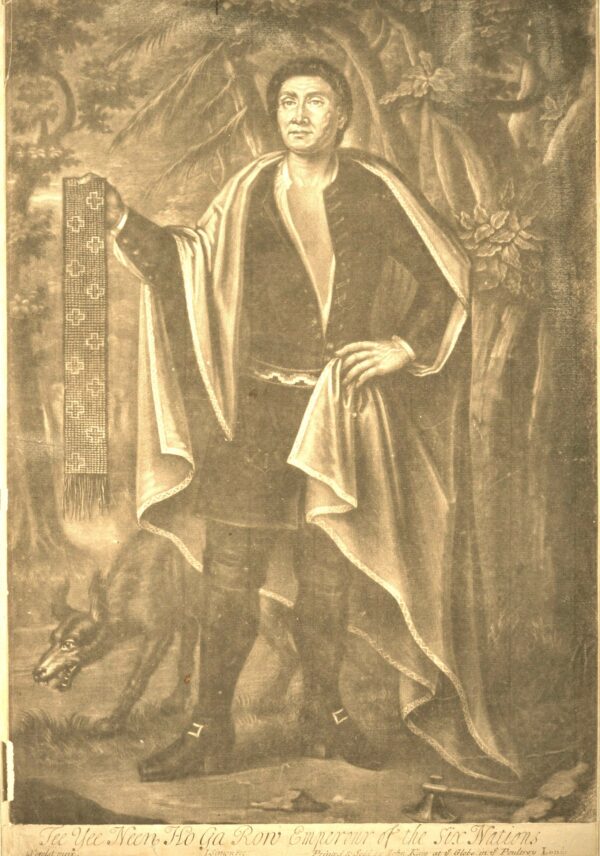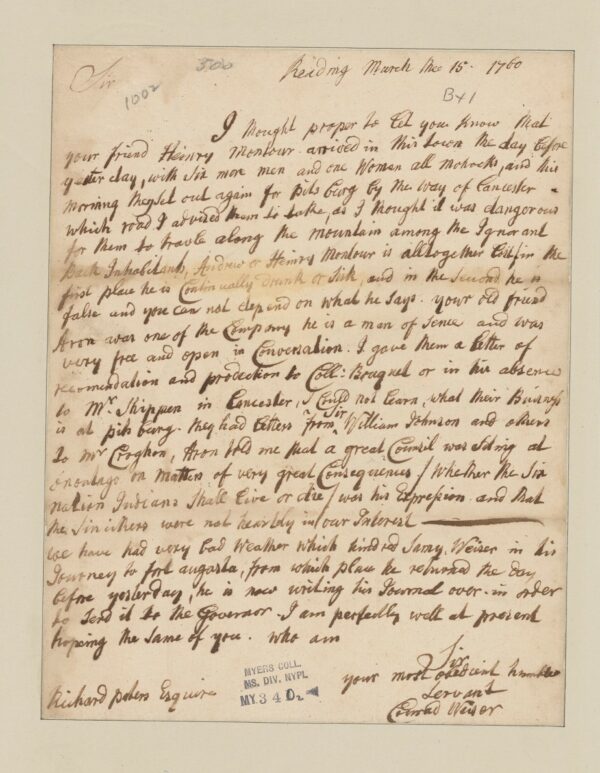The Story of Conrad Weiser
During the first couple of weeks of January, I enjoyed spending days and days online with our son John as we got several curricula ready for new printing runs. As we flipped through our American history for elementary students, I enjoyed reading again about the life of Conrad Weiser.
In the early 1700s, Conrad Weiser’s family and thousands of other Germans were discouraged. Wars in the 1600s had caused great suffering. A famine in 1710 made life worse. Conrad’s mother Anna Magdalena died that spring. Conrad was just 12 years old. Years later he wrote this about his mother:
She was much beloved by her neighbors and feared God. Her motto was: “Jesus Christ, I live for you, I die for you, thine am I in life and death.”
Conrad’s father John Weiser heard that Great Britain’s Queen Anne was willing to help German refugees obtain land in America. Less than a month after his wife died, John Weiser sold his house, fields, meadows, vineyard, and garden to his oldest daughter and her husband. He and his eight youngest children set out for England. They arrived at the beginning of September.
Thousands of Germans crowded into London. Chiefs of the Mohawk Nation were visiting there. The Mohawk felt sorry for the German refugees. They offered to give them a portion of their land in the New York colony.

Tee Yee Neen Ho Ga Row was one of the Mohawk
who visited London in 1710. He was a Christian preacher.
Image courtesy of the New York Public Library.
Queen Anne arranged for ships to take refugees to America. The nine Weisers set sail with about 3,000 other Germans. John Weiser married again soon after his family arrived in America. His new wife was an unkind stepmother. Conrad Weiser later wrote this about that time:
I frequently did not know where to turn, and learned to pray to God and His word became my most agreeable reading.
Three years after the Weisers arrived in America, Mohawk chief Quaynant asked John Weiser if Conrad could come to live with the Mohawk. John Weiser agreed. Conrad went to live in Quaynant’s village in November of 1713. He stayed eight months. While living with the Mohawk, Conrad learned their customs and language. The Mohawk made Conrad a permanent member of their nation. While I can’t imagine sending my 15-year-old son away like this, I know that my own ancestor Pierre Boucher had a similar experience in the 1600s when his father allowed him to live and learn with the Huron in New France.
The Mohawk, along with the Cayuga, Oneida, Onondaga, Seneca, and Tuscarora nations, joined together to form the Haudenosaunee Confederacy. Haudenosaunee means “people of the longhouse,” which refers to their style of housing. The British referred to this group as the Six Nations. The French called them the Iroquois. All of these nations spoke similar languages, which scholars refer to as Iroquoian languages.
Life was not as easy in America as the Weisers had hoped. They worked as indentured servants for the first few years. While Conrad was living with the Mohawk, the Weisers and about 150 other German families moved to the Schoharie Valley, on the land the Mohawk had given them. Many Mohawk lived nearby. When Conrad returned to his father in the summer, he helped the Mohawk and the settlers communicate with each other.
The governor of New York did not believe the Germans should be living in Schoharie. He sold their land to merchants. Some of the German settlers bought land back from the merchants and stayed at Schoharie. Others built a road and also canoes. They used these to move to Pennsylvania.
When Conrad Weiser was 24 years old, he married Ann Eve Feck. They had fourteen children. The couple remained at Schoharie until 1729, when they also moved to Pennsylvania. Conrad worked as a farmer and he also tanned leather.
When Europeans began coming to North America to trade and to settle, some men, like Conrad Weiser, became experts in native languages and customs. Traders and settlers hired these experts to help them in their relationships with native nations. They called them “Indian agents.”
Beaded belts called wampum were important to the Haudenosaunee. Wampum was like a history book. Notice the wampum in the portrait of Tee Yee Neen Ho Ga Row. Wampum bead designs told about past battles, treaties, and events. Conrad Weiser understood how the Haudenosaunee used wampum. This knowledge helped him in his work as a peacekeeper.
Conrad Weiser met Shikellamy in Pennsylvania. Shikellamy was a leader in the Oneida Nation, which was part of the Haudenosaunee Confederacy. The two men became friends. In 1731 Shikellamy went to Philadelphia to meet with leaders of the Pennsylvania colony. He invited Weiser to go with him. Leaders of the Pennsylvania colony and of the Haudenosaunee trusted both Weiser and Shikellamy. Weiser used his knowledge of Haudenosaunee language and customs to help the colonists and native people make many treaties.

Letter in Conrad Weiser’s handwriting.
Image courtesy of the New York Public Library.
Conrad Weiser and Shikellamy traveled often between Philadelphia and the Haudenosaunee capital in Onondaga. Their friendship grew. Until the end of his life, Conrad Weiser helped native people and European settlers live in peace. He also helped the Haudenosaunee live in peace with other native nations.
Conrad Weiser was a devout believer in Jesus Christ. He was a teacher and a minister in the Lutheran Church. Conrad and Ann’s daughter Anna Maria married Henry Muhlenberg. Muhlenberg was an early leader of the Lutheran Church in America. Many people in the Haudenosaunee Confederacy believed in Jesus.
Near the end of Shikellamy’s life, he became part of the Moravian Church. A Moravian minister was with him when he died. Conrad Weiser died in 1760. Among his possessions were an English Bible, three German Bibles, a book of sermons, a German prayer book, two hymn books, a framed map of Pennsylvania, and two “Indian blankets.”
When native people and European settlers met at a conference in 1761, Seneca George of the Seneca nation said:
We . . . and our cousins are at a great loss and sit in darkness . . . by the death of Conrad Weiser, as since his death we cannot so well understand one another.
Keeping peace is important to Jesus. May we be peacemakers and may we train our children to be peacemakers, too.
Blessed are the peacemakers,
for they shall be called sons of God.
Matthew 5:9

